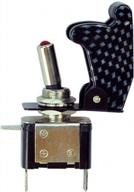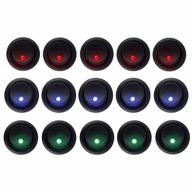
Review on SainSmart 101 70 103 16 Channel Relay Module by Oscar Ferrell

Great product - here are some missing (measured) specs
I was having trouble getting the exact (correct) specs from SainSmart so I hooked it up and took measurements. So here are some of the specs. that we can all use:Overview:1. For 12 VDC input current requirement > 500 mA.2. The drive to each control input contact must "pass" 3mA when it is low (low = relay ON). A great product by the way - great value for money! Note that the price has increased (was $23.69). less "great" but still "good" result. ***** Current input (12 VDC input) ***** - Requires about 8 mA when all relays are off. - Each relay draws about 30mA when on - so the maximum supply current is 8mA + (16 x 30mA) = 488mA (actual measured value was 500mA) - because of the +5V DC output of the board can be used (2 pins) to power the Arduino/PIC circuit, use a 12V power supply that can supply MORE THAN 500mA (depending on your circuit needs). Note that the switching regulator on the relay board needs to be reasonably efficient (e.g. 70%?) in converting the board's 5V power consumption to a 12V input power requirement. Example: 200 mA at +5 VDC (1 W) does NOT mean that the +12 V supply must supply an additional 200 mA. This is because 1W of power only requires about 83mA from a +12V supply (12V x 83mA = 1W); however let's say at 70% efficiency of the 5V regulator this goes to about 120mA (83mA/0.7) but NOT the full 200mA. ) is to ACTUALLY MEASURE the 12V input current while using a "test power supply" that can more than handle the worst case (with all relays on) and then buy a power supply that meets your needs . Always use a modern "switching" power supply (socket) as these are smaller, much more efficient, generate little heat and typically use much less "vampire power". ; However, don't overdo it. The circuits powered by the 5V power supply on the relay board are just the LED side of the optocouplers. When a low level is applied to the input control line, the optocoupler's LED turns on. turns on its relay. It seems that each optocoupler LED needs about 3mA (total 3mA x 16 = 48mA). This should give you at least many hundreds of mA to power your circuits from the relay board's 5V output pins (two of which are on the header). ***** Input Control Contacts ***** - Input Ground The control contact (logic low) turns on the appropriate relay. - The circuit driving the input control pin needs to be able to "sink" (put logic low) about 3mA of current (easy for most PIC/Arduino output pins). ***CAUTION*** If the pin is NOT driven low, it "floats" to almost +5V which feeds the optocouplers. This means that the control circuit (Arduino/PIC) must also be powered with +5V, or if it is powered with the usual 3.3V (or less!), its output pins must be "5V Resistant" ( see .Controller Contact Specifications). ). Another option is to use a "5V-tolerant serial port expander" chip like the MCP23018 (I2C interface) or MCP23S18 (SPI interface). where just a few microcontroller pins give you 16 I/O pins. They can run on 3.3V or 5V and are a bit complex, but a simple I2C or SPI interface with software can be used to control them. Finally, you can use small signal transistors (2N3904) for this 5V isolation (MCU pin to say 2.7kΩ resistor to transistor base, emitter to ground, collector to relay board input control pin). Darrell Thayer.
- Spare parts
- Hard to tell
New products
Comments (0)
Top products in 🔋 Switches & Relays

BMW Engine Ignition Start Stop Button Replacement - Compatible With 1 3 5 6 X1 X3 X5 X6 Series (E81 E90 E91 E60 E63 E84 E83 E70 E71) By Jaronx Sports Red

49 Review

5-Pack 12V/20A Red LED Illuminated 3Pin HOTSYSTEM Rocker Toggle Switch SPST ON/Off Carbon Fiber Cover For Car Truck Boat Motorcycle

45 Review

Gaming headset ASUS TUF Gaming H3 (90YH02AR-B1UA00) black-red

46 Review

HOTSYSTEM 5 Blue + 5 Red + 5 Green Dot LED Light Round Rocker Toggle Switch SPST On-Off Control For Car Truck

24 Review
Another interesting products

1.5 Inch Leveling Lift Kit Compatible With 2004-2022 F150,Leveling Lift Kit Fit For 2004-2022 F150 2WD 4WD Forged Front Strut Spacers Raise The Front Of Your F150 By 1.5

13 Review

MICHELIN Energy XM2+ 185/65 R15 88H summer

29 Review

ARANA C16-08568 20" Gas Lift Struts - Perfect For Trucks, RVs, And Boats - 20 Lbs Capacity - 2Pcs Set

15 Review

MICHELIN Energy XM2+ 205/65 R15 94V Summer

35 Review

